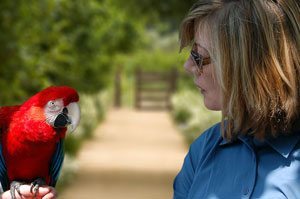 Communicating with animals helps them in all the same ways that communication helps people when they are coping with illness, injury, stress, or emotional difficulties. People do better if someone makes the effort to acknowledge their difficulties, listen to their perspective, and take their knowledge and preferences into account in trying to assist them with their challenges, and this is true of animals as well.
Communicating with animals helps them in all the same ways that communication helps people when they are coping with illness, injury, stress, or emotional difficulties. People do better if someone makes the effort to acknowledge their difficulties, listen to their perspective, and take their knowledge and preferences into account in trying to assist them with their challenges, and this is true of animals as well.
For instance, when a family is planning a move to a new house or apartment, the animals in the household will each have their own individual hopes and concerns. One animal may wonder if there will be a sunny window for basking in the new house. Another may worry about whether everyone, human and animal, will be going to the new house or if someone will be left behind. Yet another may worry about leaving a friend in the neighborhood or whether there will be trees, grass, and nature at the new house. All will want to know when the move will take place and basic details, such as how they will be traveling to the new house and how long it will take. When their questions and concerns are addressed, the move and the process of settling into the new environment can go surprisingly smoothly.
When an animal’s difficulties relate to past traumatic events, it can be very helpful to some animals to tell their story, thereby revisiting it in a safe environment and releasing its hold on their state of being, like humans do in therapy. For other animals this will be too intense, but they may benefit from voicing other concerns or seeking reassurances about their present situation. Behavioral problems often have roots in emotional issues and resolve quickly when these issues are addressed.
 Some animals’ concerns are not at all what the humans in their environment think they are, and much needless expenditure of effort can be avoided by tuning in to the animal’s perspective. For instance, a gorilla’s human caretakers surmised that he was depressed by his inability to mate, due to the presence of an older, more dominant male in the group. In actuality, he was not so concerned by this, but, being extremely intelligent, was quite bored in a zoo environment. He benefited tremendously from having tasks to occupy him and enable him to use his impressive intelligence.
Some animals’ concerns are not at all what the humans in their environment think they are, and much needless expenditure of effort can be avoided by tuning in to the animal’s perspective. For instance, a gorilla’s human caretakers surmised that he was depressed by his inability to mate, due to the presence of an older, more dominant male in the group. In actuality, he was not so concerned by this, but, being extremely intelligent, was quite bored in a zoo environment. He benefited tremendously from having tasks to occupy him and enable him to use his impressive intelligence.
In addition, many animals take a strong interest in the spiritual and emotional growth of those they love and assume as part of their purpose in life the job of assisting beloved humans with the challenges they face. Sometimes the distress an animal is showing, whether expressed physically, emotionally, or behaviorally, is related to his concern about the welfare of a human loved one. When this concern can be expressed and understood, the person and animal can move on in their lives in greater health and with a deeper bond and understanding between them.
Communicating with animals assists with the practical day to day challenges facing them, enhances the understanding between species, and strengthens the bond between human and animal. As this bond is strengthened on the individual level, it contributes to healing the overall connection between humans and animals in our world.
Click the first image to launch the slideshow.












